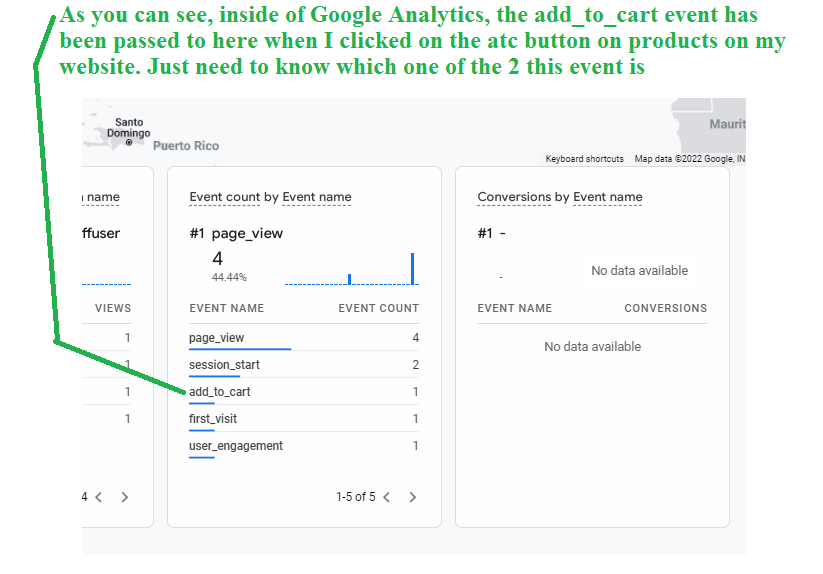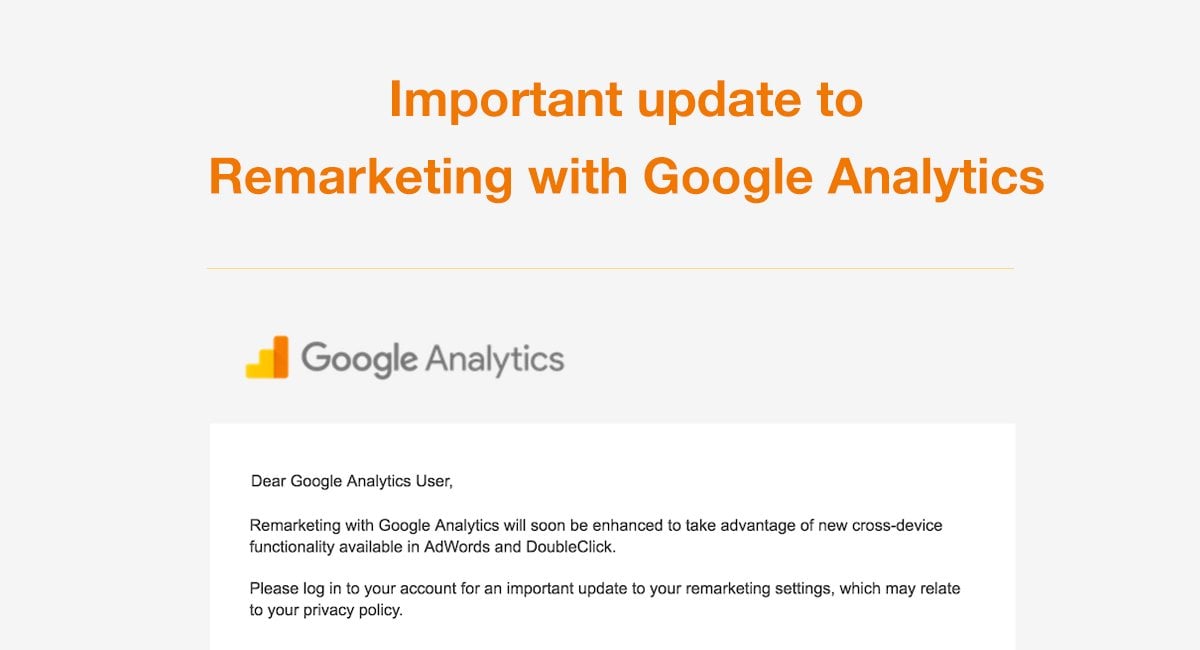A Total Overview to Remarketing In Google Analytics
Remarketing in Google Analytics: Changing Site Visitor Information Into Sales
Remarketing in Google Analytics provides a strategic method that holds the power to convert visitor data right into substantial sales end results. By using the capacities of this sophisticated device, companies can unlock a chest of understandings that lead the way for improved consumer involvement and profits generation. The ability to specifically target audiences based on their habits and choices opens doors to a world of possibilities, propelling organizations towards sustainable growth and earnings. Through a careful evaluation of visitor actions and a tailored remarketing strategy, organizations can browse the digital landscape with accuracy and finesse, untangling the true possibility of their on-line visibility.

Benefits of Remarketing in Google Analytics
Remarketing in Google Analytics uses organizations the opportunity to reconnect with site visitors that have actually shown rate of interest in their products or solutions, thus boosting brand name presence and conversions. By leveraging this effective tool, businesses can remain top-of-mind with potential consumers who have currently engaged with their website. One of the crucial benefits of remarketing is the ability to target details audiences based upon their habits on the site, permitting customized messaging and customized advertising campaigns.
In addition, remarketing in Google Analytics can aid services raise their conversion prices by re-engaging with site visitors who may not have bought or finished a preferred action on the website throughout their first check out. This targeted method can lead to higher conversion rates and inevitably drive more sales. Furthermore, remarketing can also assist services construct brand name commitment and trust by keeping consistent communication with prospective consumers throughout their acquiring trip.
Establishing Remarketing Projects
When starting remarketing campaigns in Google Analytics, organizations require to very carefully intend and apply tactical targeting tactics to successfully reach their wanted target market. The very first step in establishing remarketing projects is to define clear purposes. Whether the objective is to enhance site conversions, advertise specific items, or increase brand recognition, having a well-defined purpose will lead the entire project technique.
Following, businesses require to produce audience listings based on particular standards such as site visitors, users that deserted their shopping carts, or those that interacted with specific content. These lists permit targeted messaging customized per segment of the target market, boosting the chances of conversion.

Last but not least, services ought to establish up conversion monitoring to gauge the success of their remarketing projects accurately. By analyzing the efficiency data, organizations can enhance their campaigns for much better outcomes and greater ROI.
Leveraging Audience Segmentation for Remarketing
Making use of target market division is a crucial strategy for improving the effectiveness of remarketing projects in Google Analytics (What Is “Remarketing” In Google Analytics?). By separating your internet site site visitors right into distinctive teams based upon their habits, demographics, or interests, you can tailor your remarketing initiatives to target these particular sections with appropriate ads. Target market division enables you to produce more personalized and targeted campaigns, enhancing the chances of re-engaging visitors and driving conversions
Segmenting your audience enables you to supply tailored messaging that reverberates with each team's needs and preferences. For example, you can produce different remarketing checklists for customers that deserted their buying carts, visited details product try this web-site pages, or downloaded you could check here and install a specific source. By recognizing the different inspirations and interests of these sections, you can craft engaging ad creatives that are more probable to capture their focus and trigger them to review your website.
Furthermore, audience segmentation also assists you maximize your ad invest by concentrating on high-value sections that are most likely to convert - What Is “Remarketing” In Google Analytics?. By evaluating the efficiency of each sector, you can designate your budget more efficiently and maximize the return on your remarketing financial investment
Analyzing Remarketing Performance Metrics
To efficiently evaluate the success of remarketing campaigns in Google Analytics, evaluating vital efficiency metrics is vital. Metrics such as click-through price (CTR), conversion rate, cost per acquisition (CERTIFIED PUBLIC ACCOUNTANT), and return on advertisement invest (ROAS) supply beneficial understandings right into the performance of your remarketing efforts. CTR indicates the portion of users that clicked your advertisement after seeing it, reflecting the advertisement's relevance and attract your target market. Conversion rate measures the percent of customers that completed a desired action, such as purchasing, after clicking your ad. Certified public accountant aids identify the expense of obtaining a client via your remarketing campaign, while ROAS analyzes the revenue created for every buck invested on advertising. By assessing these metrics, you can recognize areas for renovation, enhance your projects, and allot spending plan much more effectively to make the most of the ROI of your remarketing approaches in Google Analytics.

Ideal Practices for Remarketing Success
Building on the structure of assessing remarketing performance metrics, carrying out best practices is key to accomplishing success in your remarketing ventures. Additionally, ensure that your remarketing advertisements are visually enticing and contain engaging calls to activity.
Pounding individuals with the very same ad repeatedly can lead to aggravation here are the findings and decreased effectiveness. Check your campaigns consistently, examine the information, and make data-driven decisions to continuously fine-tune your remarketing efforts for optimal effect.
Conclusion
In verdict, remarketing in Google Analytics offers companies the chance to take advantage of site visitor data to enhance sales and drive conversions. By using audience segmentation, examining efficiency metrics, and carrying out ideal methods, organizations can customize their remarketing initiatives to target high-value segments properly. Through engaging advertisement creatives and conversion tracking, services can construct brand name commitment and depend on, ultimately taking full advantage of the impact of their advertising and marketing methods.
Through a thorough analysis of site visitor actions and a tailored remarketing strategy, businesses can browse the digital landscape with accuracy and finesse, deciphering the real potential of their on-line presence.
One of the crucial advantages of remarketing is the capacity to target certain audiences based on their habits on the web site, allowing for personalized messaging and customized advertising and marketing campaigns.
Furthermore, remarketing can additionally aid organizations develop brand name loyalty and trust by keeping regular communication with possible customers throughout their purchasing trip.
Metrics such as click-through price (CTR), conversion price, price per purchase (CPA), and return on advertisement spend (ROAS) offer useful insights into the performance of your remarketing initiatives. By evaluating these metrics, you can determine areas for renovation, enhance your projects, and assign budget much more effectively to take full advantage of the ROI of your remarketing methods in Google Analytics.